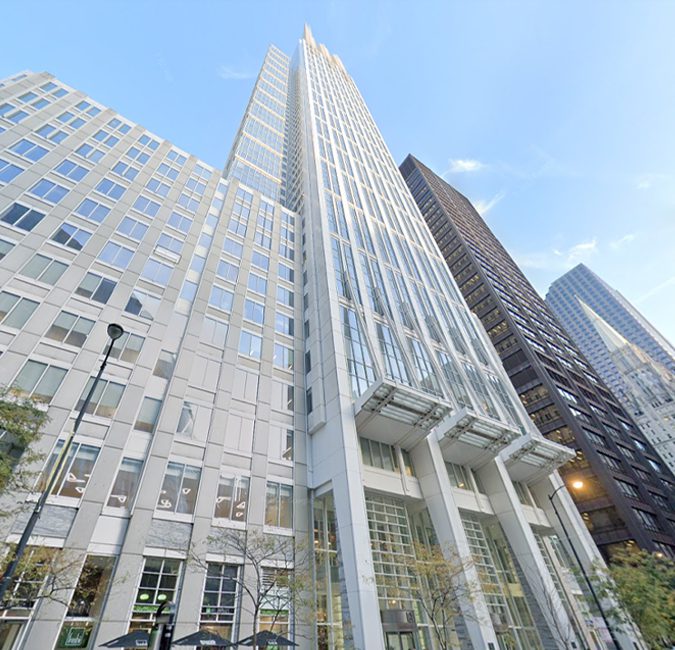New York State’s Overreach On Limiting The Concealed Carrying of Handguns Once Again Expands Our Understanding of the Second Amendment
By 2020, over 40 states issued permits to carry a concealed handgun on a “shall issue” basis. Under “shall issue” laws, the state must issue a concealed carry permit, if the applicant passes a standard background check and completes the training course required by the relevant law. A handful of states, including New York, refused to enact “shall issue” laws and instead had what are called “may issue” laws. New York’s “may issue” law was implemented in a manner that effectively made it impossible for regular citizens to obtain a concealed carry permit. In New York State Rifle & Pistol Ass’n v. Bruen, the Supreme Court held that New York’s “may issue” law was unconstitutional under the Second Amendment. New York responded by enacting a new concealed carry law that allowed for the issuance of concealed carry permits. While New York gave with one hand, however, it took away with the other. New York’s concealed carry law allows individuals to get a concealed carry permit, but designates practically every business, park and means of transportation a “sensitive place” in which carrying a concealed handgun was unlawful. One particularly egregious provision in New York’s concealed carry law was its prohibiting the carrying of a concealed handgun in any business open to the public, unless the business specifically put up a sign stating that the concealed carrying of a handgun was permitted. A federal district court in New York recently held that this provision of New York’s concealed carry law was unconstitutional under the Second Amendment.
Under New York’s “may issue” law, an individual seeking a permit to carry a handgun needed to prove to the satisfaction of a designated public official that he or she had “good cause” to carry a firearm. The “good cause” standard was extremely onerous and practically impossible to meet. Under the “good cause,” standard, the applicant needed to show that he or she faced a specific and personal threat. Living in a high crime neighborhood was not sufficient, nor was having been the victim of a violent crime. The “good cause” standard was impossible to prove in all but the smallest number of cases. Further, the permit was only valid so long as the threat existed. New York’s “may issue” was essentially a shall not issue law.
In Bruen, the Supreme Court held that New York’s “may issue” law was unconstitutional under the Second Amendment. New York responded by passing a “shall issue” law, but went on to prohibit the carrying of a firearm almost everywhere. One of the most egregious aspects of New York’s new “shall issue” law was its prohibiting the carrying of a handgun in any business establishment that is open to the public, unless the business affirmatively posted a sign declaring that carrying of a firearm was permissible in the business. As a practical matter, this would result in making it unlawful to carry a firearm in most places in New York state.
At a basic level, New York’s rule against carrying a concealed firearm into a business open to the public creates a default rule that imposes a burden on private businesses and undermines the Second Amendment right to carry a firearm. Private businesses have always had the right to establish rules as to who could enter their business establishments (provided the business is not discriminating in a manner violative of a state public accommodation law or federal law). Businesses have also had the right to insist that people coming onto their premises refrain from certain conduct. A business, for example, can establish a dress code, can charge admission to its premises, and can list items that people are not permitted to bring onto the business’ premises.
A private business can, therefore, prohibit the carrying of a firearm onto its premises. A business does not need a specific state law to give it that right. Typically, however, states have given businesses the right to post a sign indicating that the carrying of a firearm onto their premises is prohibited. Under many “shall issue” laws, the posting of such a sign is connected to a provision in the “shall issue” law that imposes certain penalties on permit holders who carry their firearm into such a business. “Shall issue” laws that contain these provisions provide added teeth to a business’ decision to prohibit the carrying of a firearm on its premises. The New York concealed carry law changed this basic paradigm.
New York’s “may issue” law did not apparently make it unlawful for a person with such a license to carry a firearm into a business open to the public. Under the “may issue” law, New York businesses could implement a policy prohibiting the carrying of a firearm onto their premises, which was consistent with the default rule that existed throughout this country’s history. New York state did not apparently care about this traditional framework, because it was practically impossible to get a concealed carry permit under New York’s “may issue” law.
It is obvious that New York flipped the baseline in the “shall issue” law to salvage as much of its concealed carry ban as possible. The “shall issue” law in this sense imposes a burden on both persons with concealed carry licenses and on private businesses who do not have a problem with persons with concealed carry licenses carrying a firearm onto their premises. New York apparently believes that many businesses will either not know about the sign requirement or will not incur the expense of purchasing a sign. What New York believes or intended, however, is not the critical issue. The reality is that the sign requirement will prohibit the carrying of concealed handguns by permit holders in a large number of private businesses. As such, New York needed to demonstrate a historical tradition that would support such a prohibition. The court in Christian v. James held that New York did not prove the existence of such a historical tradition.
When the Second Amendment was enacted, many different types of private businesses existed, such as tailors, dressmakers, shoe stores, dry goods stores, blacksmiths, restaurants, taverns and carpenters. New York did not cite one law from any state in the mid to late 1700s that prohibited the carrying of firearms in any of these private businesses, let alone a law that blanketly prohibited the carrying of firearms into all private businesses. The absence of any such laws should have convinced New York that prohibiting the carrying of handguns into all private businesses was unconstitutional.
Instead of presenting to the court a relevant historical tradition, New York cited a number of laws from the 1700s that prohibited the carrying of firearms onto plantations, or hunting on plantations without the owner’s express consent. The court easily determined that these laws were designed to prohibit hunting on enclosed land that was used for farming without the consent of the landowner. Landowners had the right to prevent hunting on their property under the common law, but the statutes gave such landowners added protections and increased the penalties for failing to get a landowner’s consent before hunting on their property.
These laws do not support New York’s sweeping ban on carrying a firearm into private businesses that were open to the public. For example, New York cited a 1715 Maryland law that prohibited persons “convicted of certain crimes, or that was ‘of evil fame, or a vagrant, or dissolute liver,’ from ‘shoot[ing], kill[ing] or hunt[ing], or to be seen to carry a gun, upon any person’s land, whereon there shall be a seated plantation, without the owner’s leave, having been once before warned . . .’” First, the law is limited to “plantations,” and does not cover a vast number of private businesses that one would find in a city or town. Second, the law has the obvious purpose of prohibiting hunting on an operating “plantation.” Finally, the law is limited to a small subset of the population, and did not cover law-abiding citizens.
New York also cited laws from Pennsylvania (1721), New Jersey (1722 and 1771), New York (1763), and Massachusetts (1780). None of these laws addressed the carrying of firearms in private businesses in a city, town or rural area. All of these laws were essentially anti-hunting laws that prohibited hunting on enclosed land and plantations. The court summarized its analysis of these laws as follows: “In sum, none of the proffered founding-era enactments, fairly read, burdened the individual’s right to carry firearms in the same way, to the same extent, or for the same reasons as the restriction here – which imposes a default rule banning firearms on all private property open to the public for ‘whatever reason and regardless of the nature of the land at issue.’”
New York cited additional laws from the mid to late 1800s, but none of these laws was similar or even analogous to New York’s changing the default rule for carrying a firearm into a private business that is open to the public for persons with a concealed carry license. Most of the laws from this later time period that New York cited were designed to prevent hunting on enclosed land.
Other laws New York cited did not come close to creating a historical tradition that would support New York’s sweeping prohibition. An Oregon law cited by New York, for example, was enacted in 1893 and prohibited the “discharge of any gun, pistol or firearms” in certain public areas. Laws prohibiting the discharge or firing of a rifle or pistol in a public area provide no support for a law that makes it unlawful to carry a concealed firearm into any business open to the public.
Finally, New York cited a few laws from the late 1800s that prohibited the carrying of a firearm into “places of public congregation.” These laws, however, did not prohibit the carrying of a firearm into private businesses that were open to the public. At most, these laws designated certain public events as sensitive places in which people should not carry firearms. New York state conceded that these laws were not direct analogues for its broad changing of the default rule prohibiting the carrying of concealed handguns into businesses open to the public.
The decision in Christian v. James is a good example of how a court can apply the historical tradition test announced in Bruen. A state trying to support a gun control law cannot simply cite a large number of laws from the 1700s and 1800s and call it a day. The state has to show that the cited laws have some similarity to the challenged gun control law. The historical tradition test first demands that the modern gun control law has a purpose (or why) similar to the earlier laws cited to support the law. The historical test then asks whether the problem targeted by the challenged gun control law addresses the problem in a way similar to the earlier laws (the how). The laws New York cited to support its prohibiting the carrying of any concealed firearm into a business open to the public without the public consent of the business owner failed both parts of the historical tradition test. Once again, New York’s overreach with respect to gun control laws has, ironically, reaffirmed the Second Amendment’s wide scope.
In a world where the right to bear arms is often challenged, ensuring that concealed carry rights are protected is paramount. At The Law Offices of George M. Sanders, P.C., we understand the importance of safeguarding individual freedoms. Our commitment to defending civil liberties is unwavering, and we stand ready to support those who feel their rights are being challenged. If you are navigating the complexities of concealed carry laws or believe your rights have been infringed upon, we invite you to take the first step toward resolution. Contact us today to schedule a consultation and explore your legal options with a team that is dedicated to safeguarding your freedoms and advocating for your rights.
Previous Post
The Battle to Protect Second Amendment Rights is Ongoing
Prior to the Supreme Court’s decision in New York State Rifle & Pistol Ass’n v. Bruen, lower federal courts would balance the right to...
NEXT Post
Parents Have A First Amendment Right To Candidly Criticize School Boards
The Supreme Court has long recognized that parents have a fundamental right to control many aspects of their children’s upbringing. While a state may...







